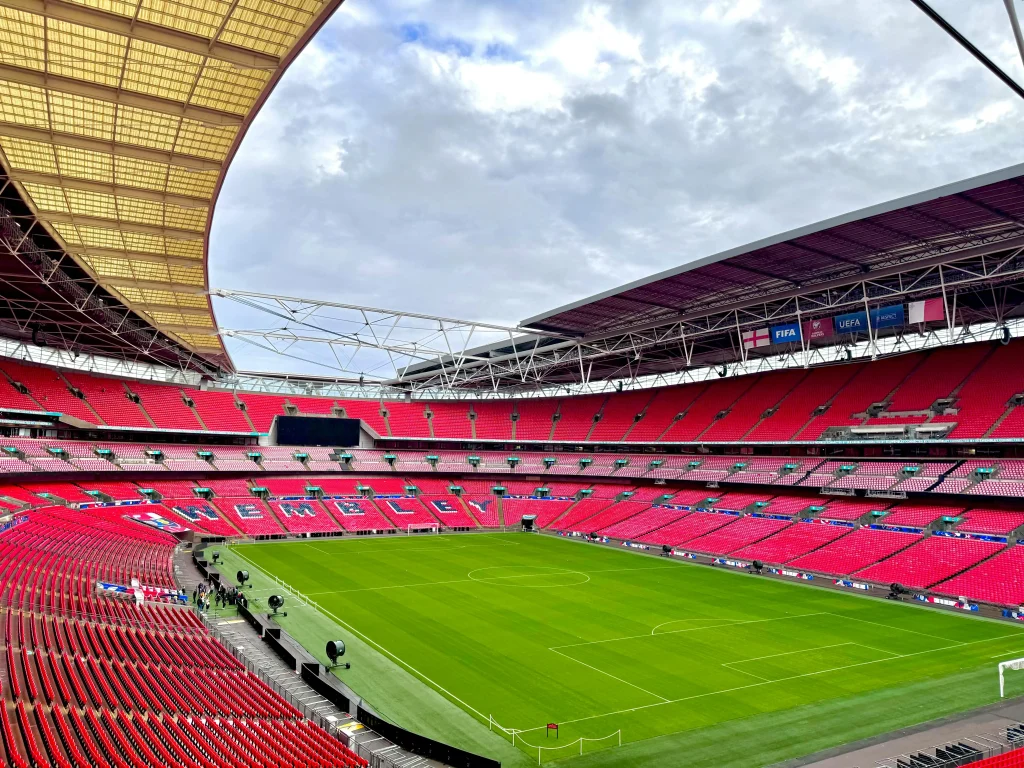
Evolution of Stadiums:
Architectural masterpieces, stadiums go beyond being just a sports facility with their aesthetic designs. Stadiums that reflect the technological and aesthetic understanding of their period have also become a part of the cultural heritage.They occupy a special place and often serve as cultural and architectural icons of the civilizations that created them.
Initially, stadiums were simple playing fields but have evolved into sophisticated sports complexes over time. The first sports arose from human activities like self-preservation and defense; as people began engaging in these activities together, team sports were born. Early sporting activities, often taking place in city squares and other open spaces, favored open-air venues. After sports developed, spatial requirements increased, which enabled the construction of places whose main function was sports.Sports have evolved differently across various civilizations and geographies, which has influenced the development of stadiums.
1- Ancient Greek Stadiums
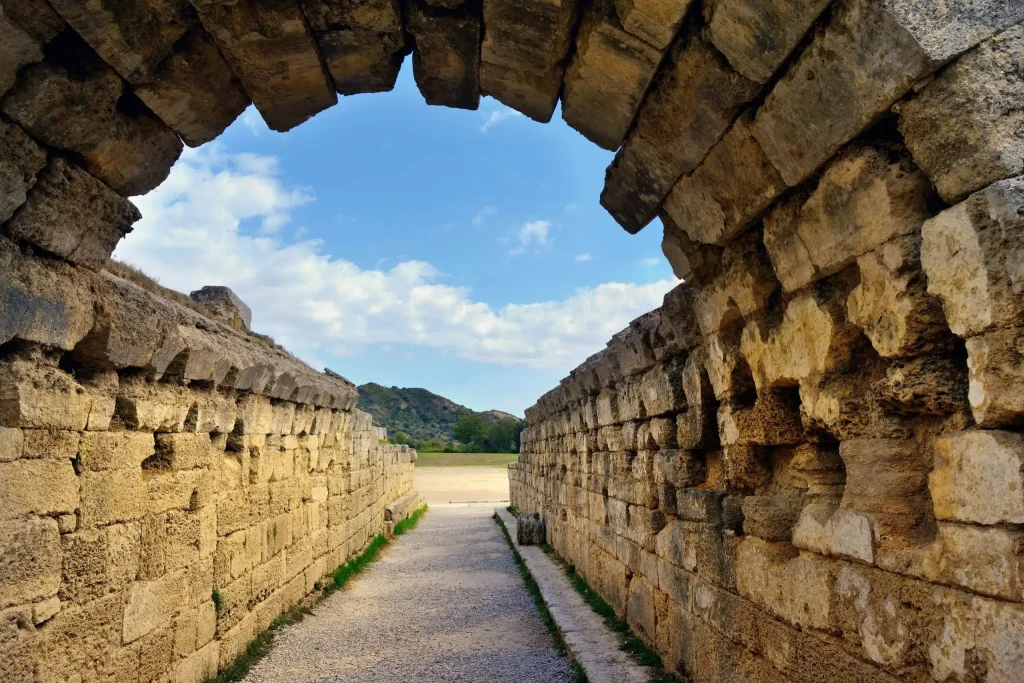
The concept and design of stadiums first developed in ancient Greece and Rome. The ancient Greeks, who organized regular athletic competitions, first held these competitions in agoras; however, as sports developed and needs increased, new structures such as the Gymnasium and Palaistra emerged to replace the inadequate agoras. As sports developed over time, and the need for a place for spectators led to the emergence of stadium structures.
The oldest known stadium is the Stadium of Olympia, the site of the ancient Olympic Games. The Greeks built stadiums in sacred areas. Stadiums built on flat areas between two slopes had a 600×100 foot flat, hard-soiled running track and earthen ramparts for spectators.
2- Roman-era Stadiums
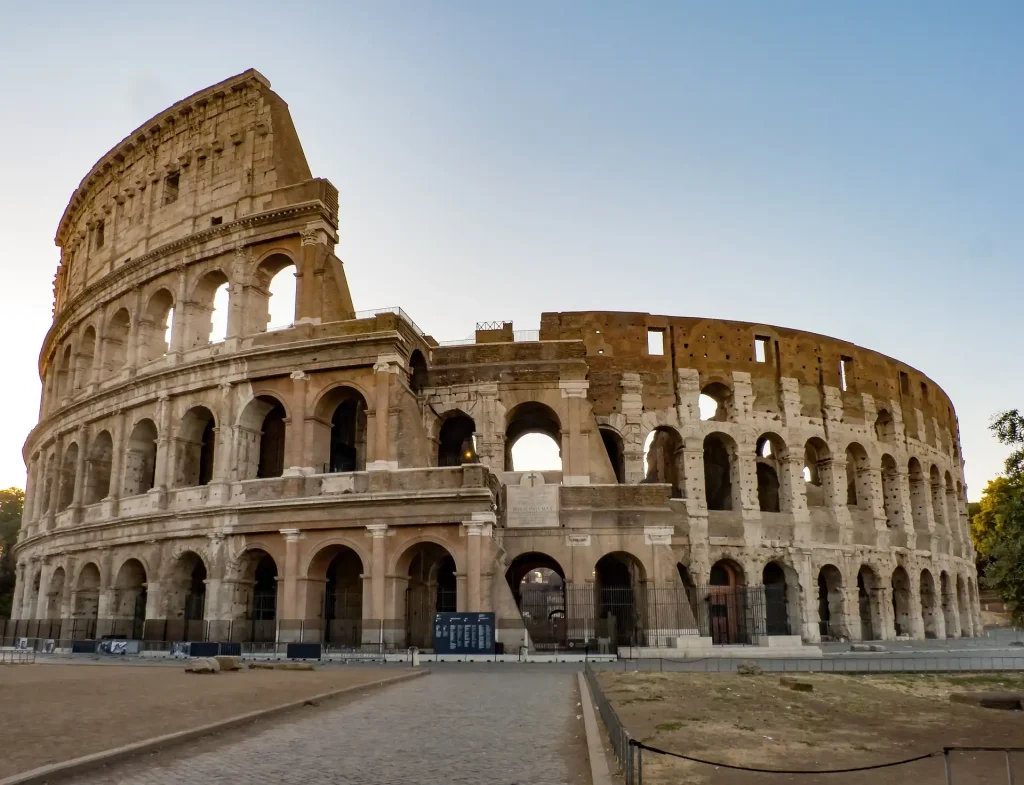
Diverging from the Greek emphasis on athletics, the Romans favored entertainment, hosting chariot races, gladiator contests, and animal fights. Circus and hippodromes were built for these activities. Hippodromes and circuses, which resembled stadiums in plan, were much larger structures in size. Another structure associated with sports in the Roman period was the amphitheatre. Amphitheaters, which reached their advanced form during the imperial period, were built in many cities.
The largest and most famous amphitheater built in Rome was the Flavian Amphitheater, also known as the Colosseum. Roman stadiums were an important turning point in the development of architectural elements such as vaults and arches.
3- Stadiums from the 5ft Century to the 18th Century
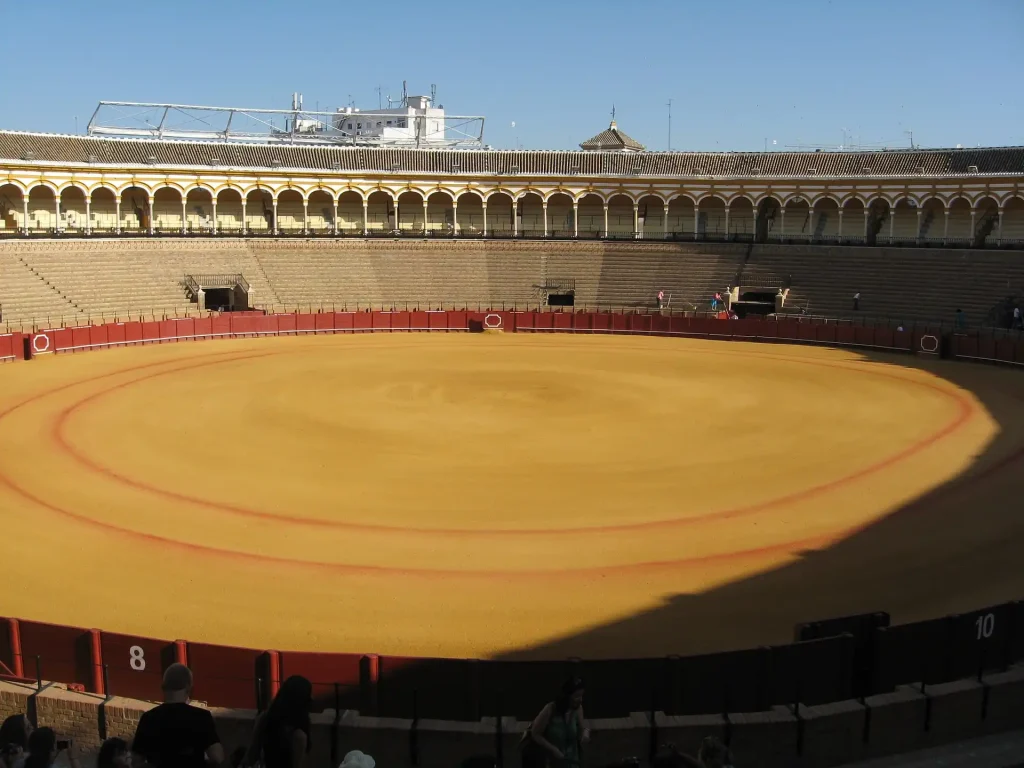
During the Middle Ages, which lasted from the 5th century to the 15th century, religion became the life point of people. Theater, sports and fighting, which were performed by the ancient Greeks and Romans, lost their popularity. With the spread of Christianity, engineering and architecture turned to church construction. The Olympic Games, which were seen as a pagan ritual, were abolished, which affected sports facilities. New amphitheaters and stadiums were not built, and many existing structures were underutilized or abandoned.
Participation in sports was revived with the Renaissance period, which lasted from the 14th century to the 17th century. With the revival of these activities, sports structures were revived and developed. Although permanent structures were not built, temporary stages and indoor areas were created from time to time. One of the permanent stadiums of this period, the Real Maestranza arena building, was built in Seville, Spain in 1761.
4- Stadiums from the 19th Century to the Present
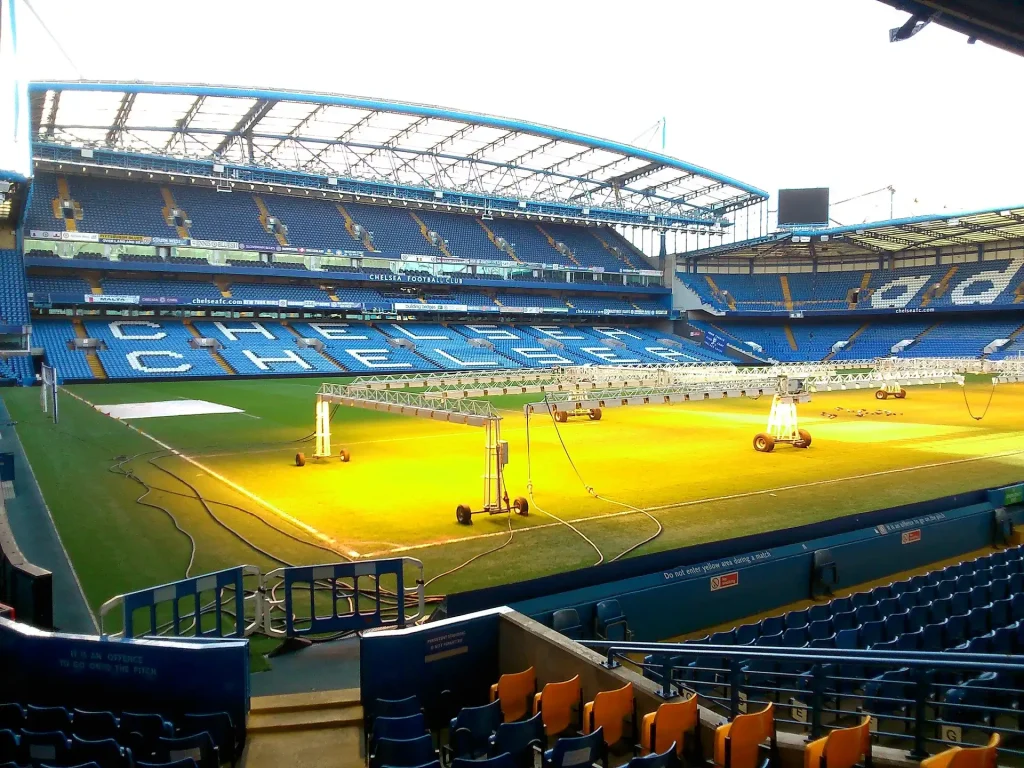
The Industrial Revolution of the 19th century fueled the growth of sports culture and stadiums.The use of iron and steel for stadiums enabled the construction of larger, more open spaces to accommodate growing crowds.In England, ball games developed in the 19th century, and the first stadiums for the game of football were built. One of the first football stadiums, Stanford Birgde in England, started operating in 1876 with a field and a stand on the side, and in 1904, slopes were created for the spectators using the waste of an old building and a stadium with a capacity of approximately 100 thousand people was built.
The 20th century witnessed a revolution in stadium design, driven by new technologies like reinforced concrete and steel. With the increasing number of spectators, solutions were produced that fans could watch the match safely; stadium designs developed with innovations such as indoor stadiums, artificial turf, and advanced lighting systems.
Modern Innovations in Stadium Design
The aesthetic design of a stadium takes it beyond being just a sports facility.They become not only places for sporting events but also structures of architectural and historical significance. Modern stadiums are impressive in terms of architecture and technologically advanced structures.They have become structures that are not only places where sports competitions will be held, but also impressive in terms of architecture, offering fans a safe and comfortable match experience.
Many new stadiums are being built around the world, pushing the boundaries of design and enhancing the spectator experience. Advances in technology have made it possible to construct stadiums with retractable roofs that can open and close depending on the weather, protecting spectators from inclement conditions.In modern stadiums, it is aimed for all spectators to have a clear view of the playing field, even if they have purchased tickets from different points.Comfortable seating, wide corridors, and adequate restrooms are essential elements in designs that provide spectators with a comfortable matchday experience.
Stadiums have become structures with impressive architecture with materials such as concrete, steel, glass, etc. With lighting suitable for the match atmosphere and high-quality sound systems, modern stadiums allow fans to experience the match atmosphere more vividly and enthusiastically.At the same time, although stadiums are structures designed for sports competitions, they can also be transformed into venues where different events can be organized with their movable stands. Stadiums used for various events other than matches expand their area of ??use and attract more spectators.
These are some examples of modern stadiums:
1- WEMBLEY STADIUM
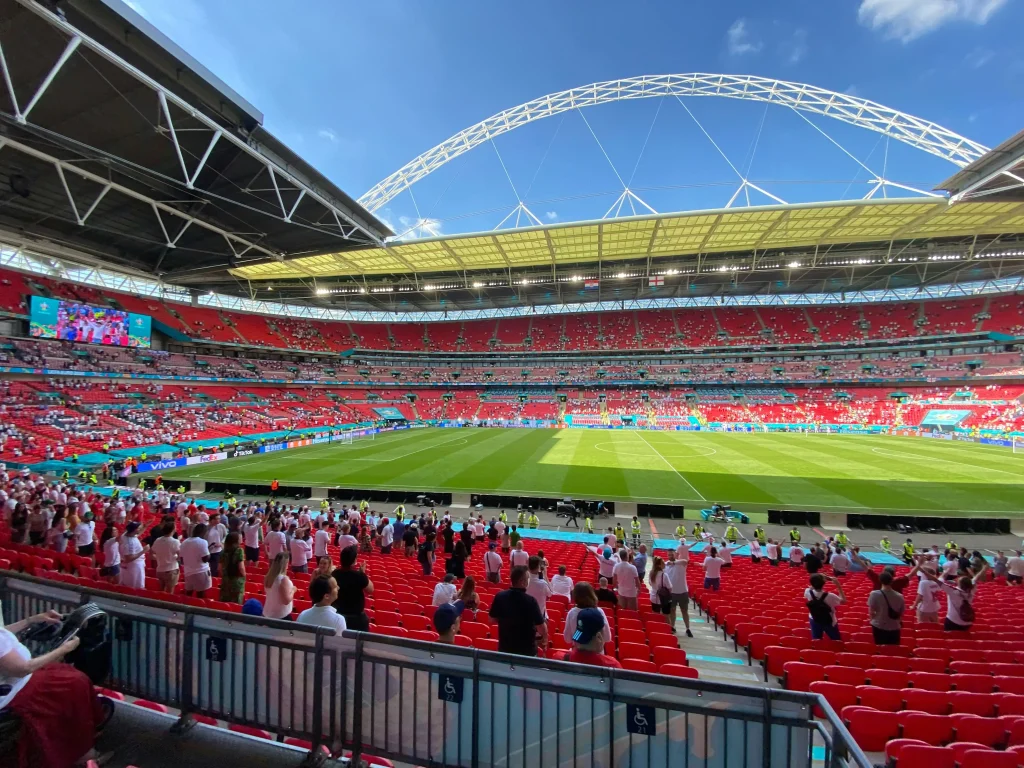
Location: London/England
Architect: Foster & Partners / HOK Sport
Wembley Stadium, England’s largest and national stadium, was first opened in 1924 and has hosted major events such as the 1948 Olympics, the 1966 World Cup, and the 1985 Live Aid concert.The stadium was demolished in 2003 and a new stadium with a capacity of 90,000 was built in 2007. Wembley Stadium, which has hosted many international football tournaments and important matches, is one of the important symbols of England.
The stadium’s 133-meter-high steel arch, a striking addition to London’s skyline, supports a 7,000-ton steel roof without the need for columns.The semicircular steel structure, which can be closed in bad weather conditions, aims to maximize the pleasure of the audience in all conditions. The stadium, which is an iconic replacement for the twin towers of the old building, has become a strong symbol and recognizable symbol for Wembley by being illuminated at night and has become the symbol of London.
2- ALLIANZ ARENA
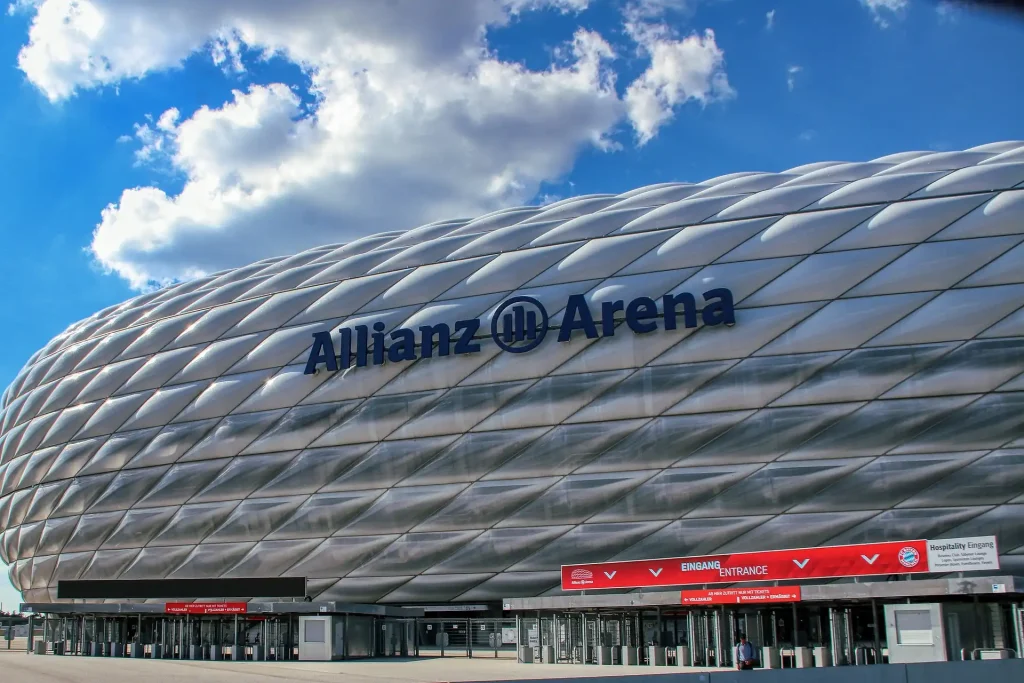
Location: Munich, Germany
Architect: Herzog & de Meuron
Allianz Arena, built in Munich, Germany, is considered one of the most modern stadiums in the world.Its design revolves around three key ideas: a dynamic facade that changes color based on the home team, a ceremonial entrance for fans, and a dramatic, crater-like interior. With a seating capacity of 69,900, the stadium’s roof consists of 2,874 self-cleaning air cushions.The world’s largest roof, made from 64,000 m² of 0.2 mm thick foil, is inflated by giant fans located beneath the Allianz Arena, ensuring a constant supply of air. The cushions are transparent to allow natural light into the stadium.The facade of the stadium, which draws attention with its variable character, can change color according to the team hosting the match (red for FC Bayern, blue for TSV and white for the national team).
The stadium’s membrane facade, which is also used in the covering of the Fröttmaning metro station, creates a sense of unity and allows fans to enter the stadium in groups from the station via a walkway that connects to the parking lot. The stadium, which has the largest underground parking lot in Europe, offers parking space for a total of 10,500 vehicles.The seating arrangement begins just 8 meters from the goal line, and the stadium features three categories of seats with identical designs. The crater-like interior, with its increasing slope towards the upper levels, creates a unique and intense atmosphere for the game. The seating areas in the corners can be removed to create standing room for spectators.
3- AT&T STADIUM
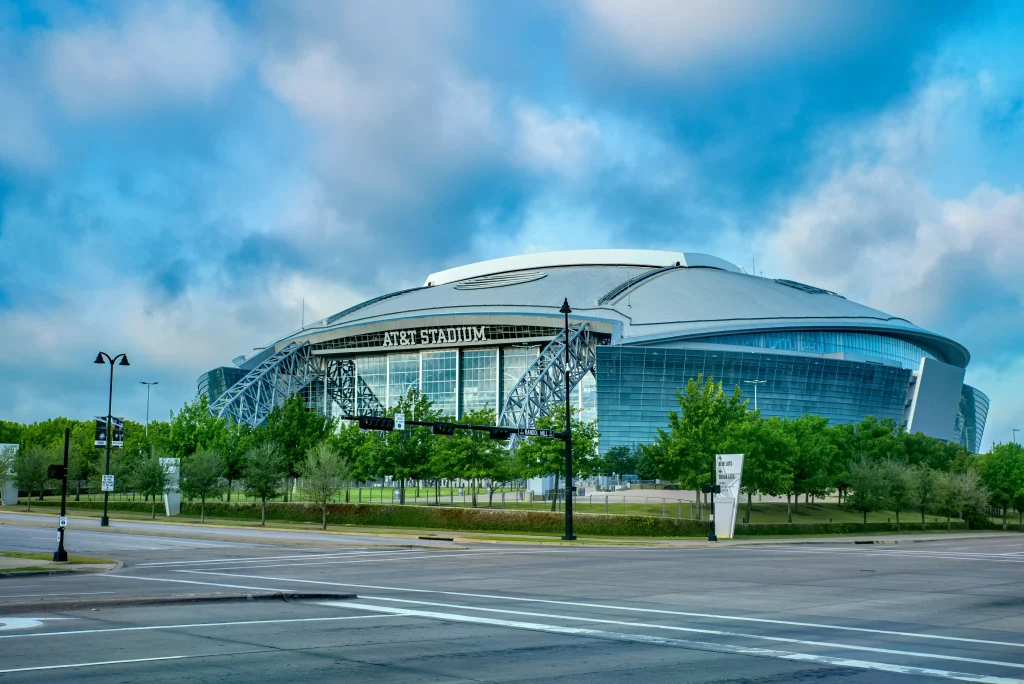
Location: Arlington, TX
Architect: HKS
AT&T Stadium, which is home to the Dallas Cowboys and opened in 2009, is an important center for the world of sports and entertainment. In addition to football matches; concerts, major events and even different events such as rodeo are also held.As a prime example of modern sports architecture, AT&T Stadium boasts a capacity of nearly 100,000 spectators. Its retractable roof, specially designed to mimic the opening of the current Texas Stadium, makes the stadium the largest indoor NFL stadium in the world.Each panel of the large retractable roof, which can be opened and closed depending on the weather conditions, can be opened and closed in 12 minutes.
Two monumental arches support the roof, which rises 90 meters above the playing field. The arches create a striking silhouette when sunlight reflects on the metallic surface during the day and when the specially designed lighting system reflects the form at night.Paying homage to the history of the Dallas Cowboys, the stadium strikes a balance between tradition and innovation. The stadium has a sloping glass exterior wall; the 26-meter-high glass curtain wall surface; is inclined outward at an angle of 14 degrees to create a sparkling glow during the day and at night.The stadium’s interior is designed with fan comfort in mind, offering luxurious and comfortable seating areas, as well as a massive video screen for an immersive viewing experience.
Learn with PAACADEMY:
Check out the workshops at PAACADEMY to learn from the industry’s best experts how to use advanced parametric design tools, AI in design workflows, and computational design in architecture!








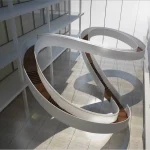










Leave a comment